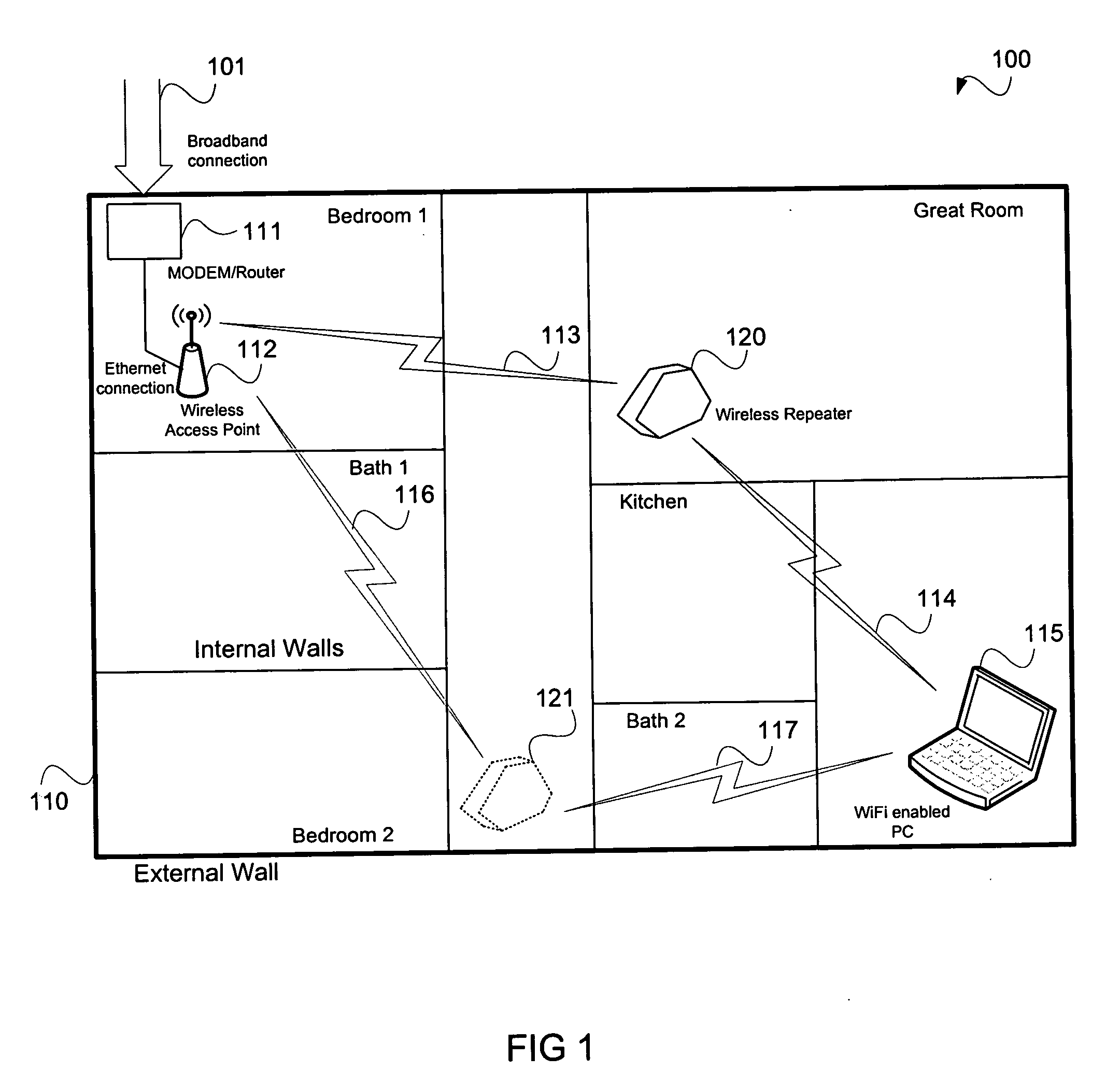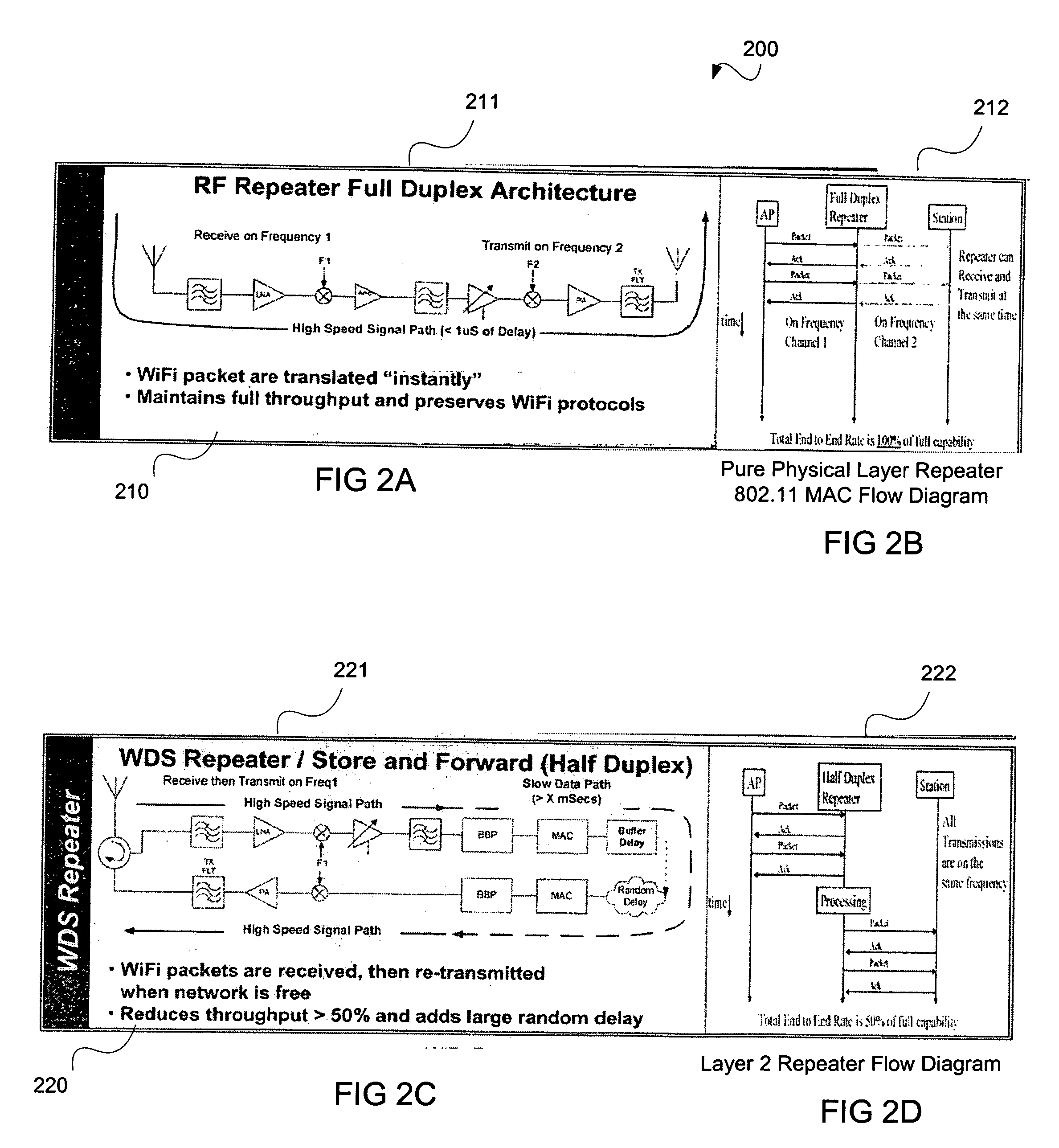Physical layer repeater with selective use of higher layer functions based on network operating conditions
a physical layer repeater and higher layer technology, applied in the field of wireless local area networks, can solve the problems of increasing the difficulty of implementing the protocol, affecting the operational range, and affecting the quality of the protocol, so as to improve the capability and eliminate the delay in processing protocol messages
- Summary
- Abstract
- Description
- Claims
- Application Information
AI Technical Summary
Benefits of technology
Problems solved by technology
Method used
Image
Examples
Embodiment Construction
[0036] Referring now to FIG. 1, a wireless local area network WLAN 100 is shown. WLAN 100 could be, for example, an in-home network configured in a residence 110 with an external broadband connection 101 from a broadband service provider such as a cable company, telephone company or the like. The broadband connection 101 can be coupled to a conversion device such as a MODEM 111, such as a cable modem, router or the like and provides a wired or wireless Ethernet connection to, for example, a wireless access point (AP) 112. In a typical repeating scenario, a first link 113 can be established between the AP 112 and a physical layer repeater 120 located in a suitable area of the residence 110 so that repeating can be conducted, for example, over a second link 114 to a client device 115 such as a PC enabled with an 802.11 interface, such as a WiFi interface or the like.
[0037] It will be appreciated that the first link 113 and the second link 114 operate at difference frequencies which c...
PUM
 Login to View More
Login to View More Abstract
Description
Claims
Application Information
 Login to View More
Login to View More - R&D
- Intellectual Property
- Life Sciences
- Materials
- Tech Scout
- Unparalleled Data Quality
- Higher Quality Content
- 60% Fewer Hallucinations
Browse by: Latest US Patents, China's latest patents, Technical Efficacy Thesaurus, Application Domain, Technology Topic, Popular Technical Reports.
© 2025 PatSnap. All rights reserved.Legal|Privacy policy|Modern Slavery Act Transparency Statement|Sitemap|About US| Contact US: help@patsnap.com



